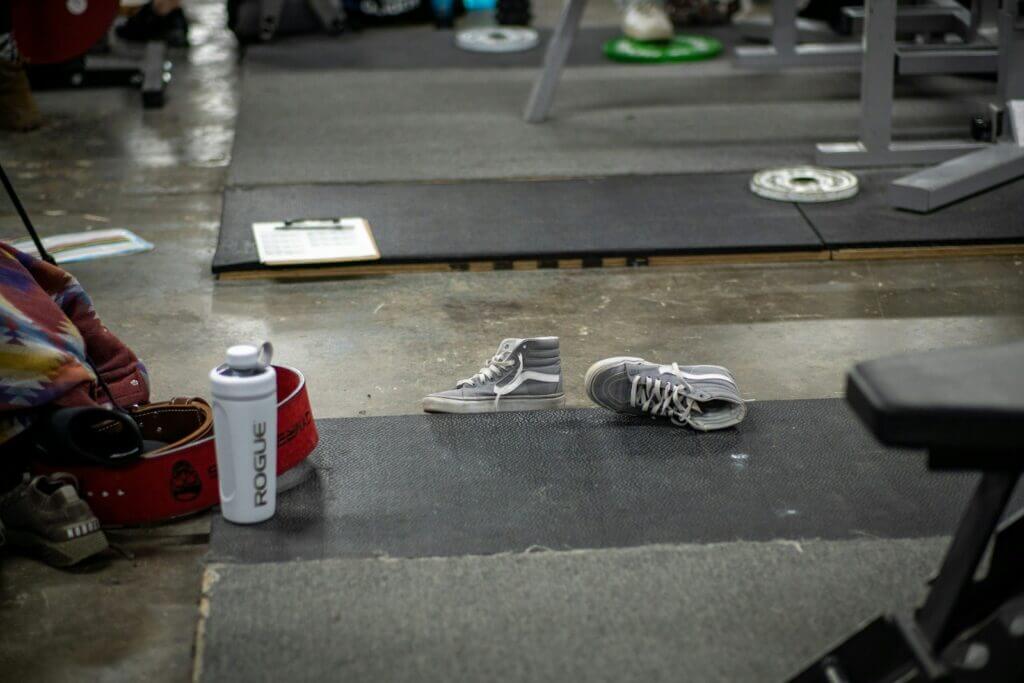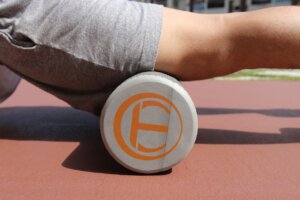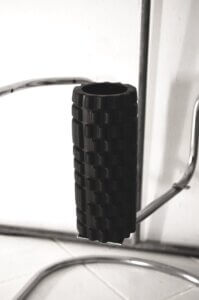How to do Hollow Rocks

Introduction:
Hollow Rocks are a fundamental core exercise in CrossFit and gymnastics, known for building a solid foundation of core strength and stability. This deceptively challenging movement engages the entire midsection and helps improve performance in various other exercises. Whether you’re a beginner or an intermediate athlete, mastering the Hollow Rock can significantly enhance your overall fitness and body control. In this guide, we’ll break down the Hollow Rock, provide step-by-step instructions, essential equipment, scaling options, common mistakes, and the benefits of incorporating this exercise into your training routine.
Steps in the Hollow Rocks movement
- Starting Position: Lie on your back on a comfortable surface. Extend your arms overhead and legs straight out.
- Hollow Body Position: Engage your core by drawing your belly button towards your spine. Lift your arms, head, shoulders, and legs off the ground. Your body should form a slight curve, resembling a hollow shape.
- Rocking Motion: Begin the rocking motion by gently shifting your weight back and forth from your shoulders to your hips. The movement should be smooth and controlled, with minimal movement in the limbs.
- Maintain the Shape: Keep your core tight and maintain the hollow body shape throughout the rocking motion. Avoid breaking at the hips or allowing your lower back to arch.
- Continue Rocking: Perform the rocking motion for the desired number of repetitions or duration, ensuring consistent tension in the core.
What Equipment is needed
- Mat or Soft Surface: While Hollow Rocks can be performed on any flat surface, using a yoga mat or similar soft surface can provide additional comfort and prevent discomfort on the lower back.
Hollow rocks primarily require no equipment, utilizing certain accessories can enhance comfort and effectiveness. A high-quality exercise or yoga mat provides cushioning, reducing discomfort on the spine and hips during the rocking motion. For individuals looking to increase the challenge, incorporating a medicine ball or light dumbbell can add resistance, intensifying the workout. Wearing appropriate athletic attire, such as moisture-wicking clothing and supportive footwear, ensures unrestricted movement and safety. Investing in these items not only enhances your hollow rock experience but also contributes to overall workout efficiency and comfort.
Check out the Equipment subsite for more tools, tips, and inspiration.

Shop Fitness gear now on Amazon
See Amazons extensive range of workout gear here. (Affiliate Link)
Scaling Options:
To gradually build strength and proficiency, consider the following scaling options:
- Tuck Rocks: Instead of keeping your legs straight, bend your knees towards your chest and perform the rocking motion. This reduces the lever length, making the exercise easier.
- Single Leg Hollow Rocks: Keep one leg extended while the other leg is bent, reducing the intensity and providing an intermediate scaling option.
- Hold the Hollow Position: If the rocking motion is too challenging, start by holding the hollow body position for a set duration, focusing on maintaining tension in the core.
Progressions and Variations of Hollow Rocks
To keep your core workouts engaging and cater to varying fitness levels, incorporating progressions and variations of the hollow rock can be beneficial. For beginners, starting with the basic hollow hold is advisable. Lie on your back, lift your legs and arms slightly off the ground, and maintain this position, ensuring your lower back remains pressed into the floor. As you build strength, you can progress to the rocking motion characteristic of the hollow rock. Advanced practitioners might explore single-leg hollow rocks, where one leg remains extended while the other is bent, or weighted hollow rocks, adding resistance to increase difficulty. Incorporating these variations not only challenges different muscle groups but also prevents workout monotony, promoting continuous improvement in core strength and stability.
Common Mistakes to Avoid:
- Arching the Lower Back: Ensure your lower back stays flat on the ground throughout the movement. Engage your core to avoid arching.
- Breaking at the Hips: Maintain the hollow body shape and avoid bending at the hips. Keep your entire body in a tight, curved position.
- Jerky Movements: The rocking motion should be smooth and controlled. Avoid using momentum or making jerky movements.
Benefits of the Movement:
- Core Strength: Hollow Rocks target the entire core, including the rectus abdominis, obliques, and lower back, building comprehensive core strength.
- Stability and Balance: This exercise enhances body control and stability, translating to better performance in other movements and sports.
- Improved Gymnastics Skills: Hollow Rocks are foundational for advanced gymnastics skills like handstands, muscle-ups, and kipping movements.

Which Muscles Are Worked:
During this exercise, the following muscle groups are engaged:
- Primary Muscles: Rectus abdominis, obliques, transverse abdominis.
- Secondary Muscles: Hip flexors, lower back, glutes.
Alternative Similar Movements:
If you’re seeking variation or targeting specific muscle groups, consider incorporating these alternative exercises:
- Hollow Hold: Maintain the hollow body position without the rocking motion.
- Superman Rocks: Perform a similar rocking motion on your stomach, engaging the lower back and glutes.
- V-Ups: From a hollow position, simultaneously lift your legs and upper body to form a V shape, then return to the hollow position.

Shop Fitness gear now on Amazon
See Amazons extensive range of workout gear here. (Affiliate Link)
Integrating Hollow Rocks into Your Workout Routine
Hollow rocks are versatile and can be seamlessly integrated into various workout routines. Incorporate them into your warm-up to activate the core muscles, preparing your body for more intensive exercises. Alternatively, use hollow rocks as part of a circuit training regimen, pairing them with exercises like push-ups, squats, or pull-ups to create a comprehensive full-body workout. For those focusing on core strength, hollow rocks can serve as a primary exercise, performed in multiple sets with controlled repetitions. Additionally, athletes involved in disciplines such as gymnastics or martial arts may find hollow rocks beneficial for enhancing body control and core stability, essential components in these activities.
Common Misconceptions About Hollow Rocks
Despite their simplicity, hollow rocks are often misunderstood. A prevalent misconception is that the exercise is solely for advanced athletes; however, with proper scaling and progressions, individuals at various fitness levels can perform hollow rocks effectively. Another misunderstanding is that hollow rocks only target the abdominal muscles. In reality, they engage a broader range of muscles, including the hip flexors, lower back, and even the glutes, contributing to overall core stability. Clarifying these misconceptions encourages more individuals to incorporate hollow rocks into their fitness routines, reaping the full spectrum of benefits they offer.
Safety Precautions and Injury Prevention
Ensuring proper form during hollow rocks is crucial to prevent injury. Always maintain a neutral spine, pressing your lower back into the floor to avoid undue stress on the lumbar region. Engage your core fully to support the movement, and avoid using momentum, which can compromise form and effectiveness. If you experience discomfort in the lower back or hips, consider modifying the exercise by bending the knees or reducing the range of motion. It’s advisable to consult with a fitness professional if you’re new to hollow rocks or have pre-existing conditions. Listening to your body and progressing at a comfortable pace are key to safely incorporating hollow rocks into your fitness regimen.
Q&A
What muscles do the hollow rock work?
Hollow Rocks primarily work the rectus abdominis, obliques, transverse abdominis, hip flexors, lower back, and glutes.
Are hollow rocks effective?
Yes, hollow rocks are highly effective for building core strength and stability, essential for various athletic movements and improving overall fitness.
How to make hollow rocks harder?
To make hollow rocks harder, you can increase the duration of the exercise, add ankle weights, or hold a weight plate overhead.
How to perform hollow rock?
Lie on your back, engage your core, lift your arms and legs, and gently rock back and forth from your shoulders to your hips, maintaining the hollow body position throughout.
How long does it take to do hollow rock?
Performing hollow rocks typically involves doing them for a specific duration, like 30 seconds to a minute, or for a set number of repetitions, such as 10-20 rocks.
Are hollow holds better than planks?
Hollow holds and planks both target core strength but in different ways. Hollow holds focus more on the deep core muscles and help with gymnastics movements, while planks are excellent for overall core stability.
What are Superman exercises?
Superman exercises involve lying face down, extending your arms and legs, and lifting them off the ground simultaneously to strengthen the lower back and glutes.
Do hollow holds build abs?
Yes, hollow holds are excellent for building strong and defined abs as they intensely engage the entire core.
How to do a hollow?
To do a hollow, lie on your back, engage your core, lift your arms and legs off the ground, and maintain a curved, hollow body position.
Is hollow hold hard?
Yes, hollow holds can be challenging as they require significant core strength and the ability to maintain tension throughout the body.
Why can’t I do hollow body holds?
Difficulty in performing hollow body holds usually stems from a lack of core strength or improper technique. Consistent practice and scaling options like tuck holds can help.
Is hollow hold safe?
Hollow holds are safe when performed with proper form. Ensure you engage your core and avoid arching your lower back to prevent injury.
How many hollow holds should I do a day?
The number of hollow holds you should do daily depends on your fitness level. Starting with 3-4 sets of 20-30 seconds each, 2-3 times a week, is a good approach.
What is the world record for the hollow hold?
As of now, there isn’t a widely recognized world record for the hollow hold, but impressive holds can last several minutes.
Can V-ups give you abs?
Yes, V-ups are effective for developing strong and defined abs as they target both the upper and lower abdominal muscles.
How to breathe during Hollow Hold?
During a hollow hold, breathe deeply and steadily. Focus on maintaining tension in your core while taking controlled breaths.
Conclusion:
Incorporating Hollow Rocks into your training routine can drastically improve your core strength, stability, and overall athletic performance. With dedication and proper form, you’ll find this exercise to be a valuable addition to your fitness arsenal. So, lay down that mat, engage your core, and start rocking your way to a stronger midsection!

Shop Fitness gear now on Amazon
See Amazons extensive range of workout gear here. (Affiliate Link)

🏋️ Written by: Mike Kerr
Mike is the founder of Strengthguides.com and a certified CrossFit Level 1 Trainer (CF-L1) and certified Kettlebell Instructor with over 10 years of experience in functional fitness. He specializes in developing programs that maximize performance without sacrificing mobility. Mike Kerr is passionate about making complex training methodologies comprehensible and safe for everyone.





